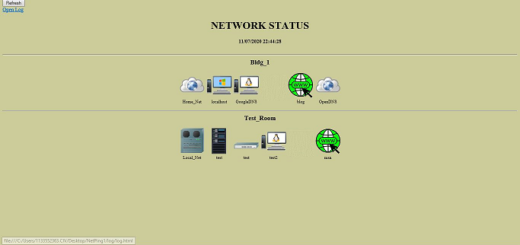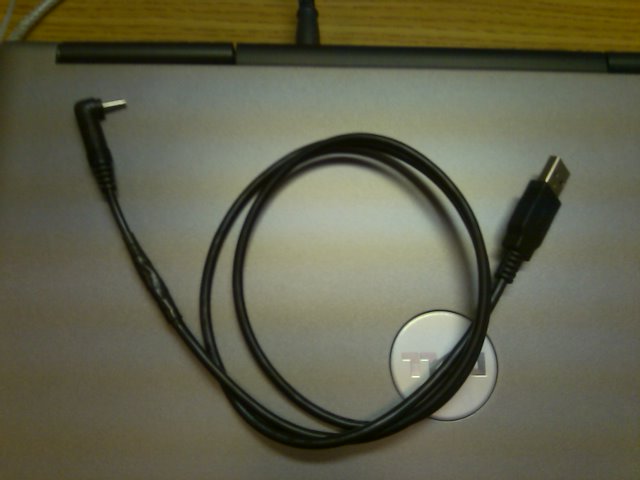Proxmox VE 8 Cluster
I decided in November that I was going to move away from VMWare and on to an open source hypervisor. Some of the systems I was using were getting to be several years old and I already had to replace one of them. The newest system I had in my virtualization lab was a six core i5 with 64 gigabytes of DDR4 memory. Then I went to a sale that had Dell computers for $25 a piece. They were Dell 7060s and turned out to be 6 core i5 systems with 8 gigs of memory. Long story short, I bought two of them and now have 3 systems that are almost identical for specs. Systems specs are below:
Node1 and 2 are the Dell 7060s
- 6 x Intel(R) Core(TM) i5-8500 CPU @ 3.00GHz
- 128 GB NVMe boot drive
- 240 GB Kingston SSD
- 2T Seagate hard drive
- Node 1 has 64 GB DDR4
- Node 2 has 32 GB DDR4
Node 3 Asus Rock DeskMini 310W
- 6 x Intel(R) Core(TM) i5-9400 CPU @ 3.00GHz
- 500 GB NVMe boot drive
- 240 GB Kingston SSD
- 2T Seagate hard drive
- 64 GB DDR4
Proxmox Virtual Environment 8 (released on June 2023) includes various enhancements:
- Based on Debian Bookworm (12.0)
- Latest 6.2 Kernel as stable default
- QEMU 8.0.2
- LXC 5.0.2
- ZFS 2.1.12
- Ceph Quincy 17.2.6
Proxmox VE specs:
- Virtualization: Proxmox VE supports multiple virtualization technologies, including KVM, Xen, and OpenVZ.
- Containerization: Proxmox VE also supports containerization using Linux containers (LXC).
- Hypervisor: Proxmox VE is a bare-metal hypervisor, meaning it runs directly on the host machine’s hardware without requiring an additional layer of software.
- Live Migration: Proxmox VE allows for live migration of virtual machines between hosts, making it easy to move VMs between physical servers as needed.
- High Availability: Proxmox VE provides built-in high availability features, such as automatic failover and load balancing, to ensure that critical applications remain available even in the event of a host failure.
- Snapshots: Proxmox VE allows you to take snapshots of your virtual machines at any time, allowing you to easily roll back to a previous state in case of a problem.
- Storage: Proxmox VE supports a wide range of storage options, including local storage, iSCSI, Fibre Channel, and NFS.
- Networking: Proxmox VE provides a flexible networking architecture, allowing you to configure networks with a variety of different topologies and protocols.
- Security: Proxmox VE includes a number of security features, such as secure authentication and authorization, as well as support for encryption and access control.
- Cost-effective: Proxmox VE is open source and free to use, making it a cost-effective alternative to other virtualization solutions.
- Easy to use: Proxmox VE has a user-friendly interface and is designed to be easy to use, even for those without extensive virtualization experience.
- Multi-tenancy: Proxmox VE supports multi-tenancy, allowing you to create isolated environments for different users or organizations.
- Disaster Recovery: Proxmox VE provides disaster recovery features, such as backup and restore, to help ensure business continuity in the event of a disaster.
- Open Source: Proxmox VE is open source software, which means that it is free to use, modify, and distribute.
- Community Support: Proxmox VE has a large and active community of users and developers who contribute to its development and provide support.
- Extensive documentation: Proxmox VE has extensive documentation, including tutorials, guides, and FAQs, to help you get started and resolve any issues that may arise.
- Performance: Proxmox VE is designed to provide high performance, with fast virtual machine creation and migration times, and low overhead.
- Compatibility: Proxmox VE is compatible with a wide range of operating systems, including Windows and Linux.
Overall, Proxmox VE offers a powerful and flexible virtualization platform that can help organizations improve their IT efficiency and reduce costs. Its open source nature and active community support make it a great choice for businesses of all sizes.
This cluster started out as an additional test setup to work on VMs with Proxmox VE 7.3. Over time this became my primary way to virtualize systems. I became tired of VMWare and its move to limited hardware support. Additionally, Proxmox has the ability to backup your VMs built in, which is a big plus. Another plus is that it is Debian and I can use my Nagios monitoring scripts to keep track of the systems performance and issues.
Proxmox Virtual Environment is an open-source bare-metal hypervisor that provides an efficient and powerful solution for building highly scalable and available virtual infrastructure. With version 8 released recently, we wanted to take a closer look at the exciting new features added in this latest release. Let’s dive into them.One of the main improvements in Proxmox VE 8 is the significant boost in storage performance. This is achieved through multiple changes. Firstly, ZFS is now enabled by default. ZFS is a high-performance open-source storage system that provides advanced functionality such as check-summing, deduplication, compression, and thin provisioning. These features significantly reduce the amount of disk space required, and improve read and write speeds.
Secondly, Proxmox VE 8 introduces support for NVMe devices. NVMe (Non-Volatile Memory Express) is a faster and more power-efficient interface standard for connecting solid-state drives to servers. This technology enables higher bandwidth, lower latency, and increased IOPS compared to traditional SATA hard drives. Another improvement in storage performance is the introduction of inline data deduplication and compression. These features allow for even greater reduction in storage usage and improved performance. Resource allocation is another area where Proxmox VE 8 shines. Version 8 introduces a new feature called ‘Smart Control’. Smart Control intelligently manages CPU, memory, and network resources across all active containers, ensuring maximum efficiency and utilization.
Additionally, Proxmox VE 8 includes a new feature called ‘CPU pinning’. This feature allows for the assignment of specific CPUs to specific containers, resulting in reduced overhead and improved overall performance. In terms of high availability, Proxmox VE 8 has introduced several notable improvements. One of the key improvements is the ability to configure a cluster with up to 64 nodes. This greatly increases fault tolerance and redundancy. Moreover, Proxmox VE 8 supports multi-site clusters. Multi-site clusters enable the creation of clusters spanning multiple geographic locations, providing even greater disaster recovery capabilities. Finally, Proxmox VE 8 introduces support for shared storage via Gluster. Gluster is an open-source distributed file system that provides high-performance, scalability, and reliability. Proxmox VE 8 offers numerous exciting new features that significantly enhance its performance, efficiency, and high availability capabilities. Whether you’re looking to build a large scale virtual infrastructure, or simply need a reliable and efficient solution for your small business, Proxmox VE 8 delivers.
This cluster has been up and running for around a year with only one issue. I broke the console connection ability when I did the upgrade from 7.3 to 8.0. It is still broken, but can be fixed. One of the features that really made Proxmox a plus to me, is the ability to schedule backups and make the process automated. VMWare changed over the years and truly made this more of a task with an attached prices tag.
I really enjoy using this hypervisor. You should give it a shot and you will enjoy it as well.





